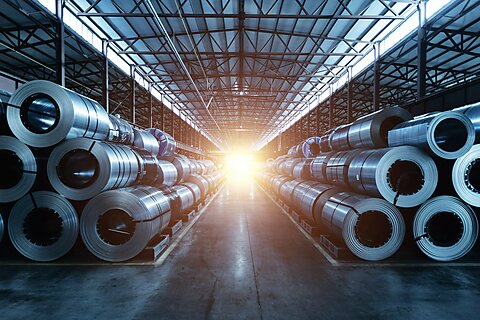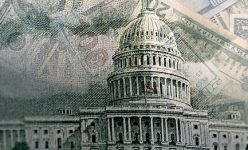
Clark Packard and Alfredo Carrillo Obregon
On February 9, President Trump announced he would impose a 25 percent tariff on all imports of steel and aluminum this week. Protecting American steelmaking may make for good politics, but it’s a recipe for significant losses for the American economy, particularly manufacturing.
One needs to look no further than the last time President Trump occupied the White House, when his administration imposed “national security” tariffs of 25 percent on imported steel and 10 percent on imported aluminum under Section 232 of the Trade Expansion Act of 1962. Several economic studies have found that those tariffs imposed high costs on Americans, particularly firms and workers in steel-consuming industries, and the costs dwarfed whatever gains the tariffs led to in terms of increased capacity utilization and employment in US steelmaking (Table 1).
These harms are compounded by the political dysfunction that Trump’s last attempt at blanket metals tariffs ushered in at home and abroad. As Scott Lincicome and Inu Manak documented in 2021, Trump abused the ambiguity of Section 232 to unilaterally extend the coverage of the steel and aluminum tariffs beyond their original scope. It is still not clear if he’ll invoke the same statute this time.
There are significant risks that the president could abuse another one of the executive branch’s discretionary authorities. For example, President Trump recently threatened to invoke the International Emergency Economic Powers Act (IEEPA) to impose steep tariffs on all imports from Canada and Mexico (IEEPA has never been used to impose tariffs). Moreover, his February 9 announcement suggests that this next batch of steel and aluminum tariffs would cover imports from allies, too, including the aforementioned USMCA countries, the European Union, Japan, and the United Kingdom.
Should Trump move forward with these new tariffs, it would be the latest instance of a six-decade-plus trend of US policymakers showering the domestic steel industry with an unsavory mixture of protectionism measures, including price floors, creative methods of inflating antidumping and countervailing duties, and blocking foreign direct investment from allied countries like Japan, as Clark Packard documents in a forthcoming Cato paper.
While bad enough, the mere threat of more tariffs is giving license to domestic steel companies to further raise prices, and steel-consuming domestic producers are paying the price.
For instance, as the Trump administration threatened across-the-board tariffs on Mexico and Canada, which accounted for about 35 percent of all US steel imports in 2024, domestic steel producers responded by raising their prices. According to a recent Wall Street Journal story, US Steel increased a $50 per ton price increase for flat-rolled steel while Nucor raised its prices by $25 per ton over the last few weeks even amid a soft manufacturing environment.
The Journal’s story is noteworthy for two reasons.
First, it provides real-life examples of the dangers of more steel protectionism and uncertainty. In its reporting, the Journal profiled Riverdale Mills, a Massachusetts-based producer of steel wire mesh and wire fencing used in lobster and crab traps and other applications. Steel accounts for about two-thirds of the company’s production costs and about 80 percent of its steel was sourced in Canada because shipping costs to New England are lower than mills in South Carolina, Illinois, and Texas. The company currently employs about 120 people. Raising Riverdale Mills’ production costs through tariffs and threatened tariffs erodes the company’s competitiveness versus foreign makers.
The first Trump administration’s steel tariffs “hammered” the company’s profit margins. Though the company didn’t lay off employees or raise prices, it slashed planned investment in new equipment.
Riverdale Mills’ story is not unique. Using hot-rolled band as an example, Figure 1 below demonstrates that steel prices in the United States are consistently higher than the world price. This dynamic has plagued domestic manufacturers for years.
Indeed, the largest American consumers of steel are the construction, automotive, and farm equipment industries. Steel-consuming manufacturing industries employ about 46 times the number of workers employed in steel production.[1] The Journal’s story also documents the cascading protectionism in the steel industry. After the Trump administration levied the previously mentioned costly “national security” tariffs on steel imports, the domestic steel industry added—or will shortly add—nearly 12 million tons of additional annual capacity to make flat-rolled steel. Despite softer demand, domestic steel companies are “counting on additional tariffs to squeeze more imports out of the U.S. steel market.” In other words, protectionism begets protectionism.
Sixty-plus years of American steel protectionism—and nearly seven since the first Trump administration’s “national security” tariffs—have not succeeded at reversing the industry’s long-term decline. Yet they have imposed and continue to impose significant costs on Americans. There is no reason to believe that even more tariffs can achieve anything of note other than extending the unholy alliance between Washington and Big Steel.
[1] Note that this ratio only includes steel-consuming manufacturing industries. Adding workers in non-manufacturing steel-consuming industries like the construction industry, which employed 8 million people in 2023 per the Bureau of Labor Statistics’ Current Employment Statistics, would make this ratio much larger.























